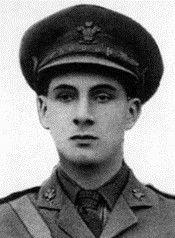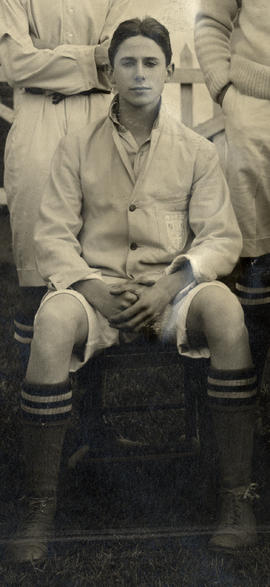Byam Shaw, George, eldest son of John Byam Liston Shaw, of Kensington, artist, by Caroline Evelyn Eunice, daughter of John Nott Pyke-Nott, of Bydown House, North Devon; b. Oct. 6, 1900; adm. April 30, 1914 (H); left July 1917; R. M.C. Sandhurst 1919; 2nd Lieut. Royal Scots Dec. 23, 1921; Lieut. Dec. 23, 1923; Capt. Nov. 9, 1934; Major, Dec. 23, 1938; killed in action in France May 1940; unm.
George Byam-Shaw was born at Kensington, London on the 6th of October 1900 the eldest son of John Byam Liston Shaw, an artist, and Evelyn Caroline Eunice (nee Pyke-Nott) Byam Shaw, an artist, of 62, Addison Road, Kensington. He was christened at St Barnabus’ Church, Kensington on the 1st of November 1900.
He was educated at Westminster School where he was up Homeboarders from the 30th of April 1914 to July 1917. He went on to the Royal Military College, Sandhurst where he boxed for the College at featherweight against Woolwich in 1921. He was commissioned as a 2nd Lieutenant in the Royal Scots (Royal Regiment) on the 23rd of December 1921. He was promoted to Lieutenant on the 23rd of December 1923 and to Captain on the 9th of November 1934. He was promoted to Major on the 23rd of December 1938.
Following the outbreak of war the 1st Battalion, Royal Scots deployed to France on the 21st of September 1939. On the 10th of May 1940 the Germans invaded France and the Low Countries. That morning the Battalion was at Lecelles and, as a number of officers were away on leave, George Byam-Shaw was appointed as the second in command of the Battalion. The day was spent packing to leave and the bulk of the Battalion departed for Overysche at 9.15pm with George Byam-Shaw leading the remainder of the men away at 11.10pm that night.
By the 20th of May, the Battalion was at Froidmont when it received orders to make a reconnaissance of the banks of the River Escaut near Calonne, to the south of Tournai where they were to relieve the 8th Battalion, Royal Warwickshire Regiment that night. The handover was made at around midnight and was carried out under shell and mortar fire with several casualties being suffered. On the 21st of May 1940, the Battalion was heavily shelled and mortared throughout the morning by the end of which their flank was exposed. D Company carried out several counterattacks which eased the situation but the shelling continued through the afternoon. George Byam-Shaw was killed outright while pausing to have a cigarette during the fighting. By the end of the day the Battalion had suffered 150 casualties but had held their ground. The Padre buried some of dead during the night and buried George Byam-Shaw the next morning.
Only a handful of men from the Battalion were eventually evacuated from Dunkirk.
He is buried at Bruyelle War Cemetery Plot II, Row A Grave 1.

